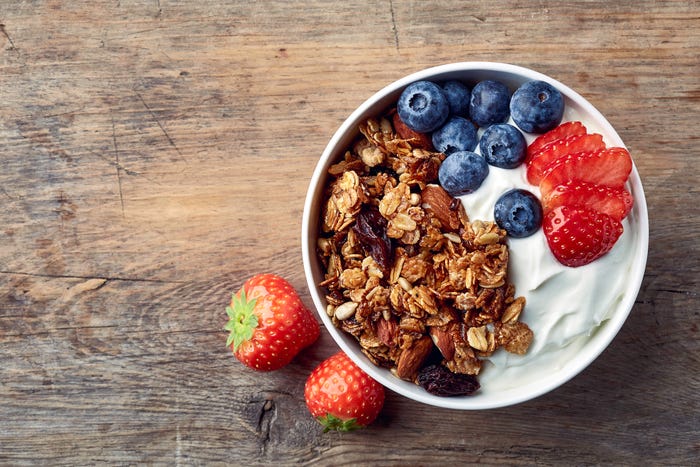Experts challenge 'red flags' on ultra-processed foods
Despite warnings against ultra-processed foods, experts argue processing can offer benefits like safety, variety and accessibility, urging consumers to be curious and choose wisely rather than rely on blanket “red flags.”

At a Glance
- All ultra-processed foods aren’t unhealthy, per experts, who note benefits like safety, affordability, dietary adaptations.
- Experts contend that food processing is essential in driving innovation and ensuring food safety.
- Processing methods like pasteurization and retorting enhance safety by eliminating harmful microbes.
The Washington Post recently published an article addressing nine “red flags” that savvy consumers should avoid to keep ultra-processed foods from landing in their carts.
Its warning signs run from the mildly chemophobic — the presence of thickeners, stabilizers, emulsifiers and “fake” sweeteners — to the downright counterintuitive and arbitrary: Stay away from health claims; treat instant and flavored products with suspicion; and beware of anything containing more than three ingredients? (Bagged salad kits, we hardly knew ye.)
As ultra-processed, highly processed and highly appetitive foods come in for criticism, each screed can feel demoralizing to the food and beverage professionals actually doing all that processing.
After all, one can argue food processing has made our food supply safer, healthier, more affordable, more abundant and more consistent.
Best of intentions
Indeed, we are living in a golden age of eating, especially if variety is your spice of life.
To be clear, many of the fast foods, convenience snacks, meal replacements and “low-cost, highly marketed foods” that fit the ultra-processed profile can take a toll on health, according to Sarah Fitzgerald, a “culinologist” at product development firm CuliNEX. Especially when those foods replace whole alternatives with more nutrient density and less fat, sugar or sheer caloric energy.
In that sense, the intent of these articles “to help readers make healthier choices at the grocery store is great,” Fitzgerald said. In fact, by singling out the excessive sugar often added to ultra-processed foods, some of the article’s advice even strikes Fitzgerald as sound, as “limiting sugar intake is a good choice.”

Blanket statements
“My critique with categorizing foods based on processing is that it’s oversimplified,” Fitzgerald explained.
For one, it fails to recognize the diversity of foods that qualify as ultra-processed. “It blindfolds itself to foods that’re less processed, but that also contribute increased levels of sugar, saturated fat and sodium,” Fitzgerald said. “To bucket all ultra-processed foods into the category of ‘bad for public health, creating poor food behaviors’ is outdated.”
Rachel Zemser, CFS, CCS, MS, a product development consultant and founder of A La Carte Connections, agreed. “Blanket statements telling consumers not to eat granola, sweetened yogurt or canned soup aren’t helpful and can mislead,” she explained. “There are plenty of packaged products made to be healthier and last long on shelves without compromising nutrition or taste.”

Technological triumph
In fact, Fitzgerald points to the “ocean of tools and technologies” that food processors use to make milk from plants, snack chips from proteins and the lives of those with dietary restrictions more livable. Lion’s mane (Hericium erinaceus) coffee, nonalcoholic beer, cricket flour and MRE (meals ready to eat): None would exist without sophisticated processing, she said.
Zemser added thermal processes like pasteurization (including the High-Temperature Short-Time process), retorting and aseptic processing are effectively cooking — just on a grander scale. “None of these methods poses any common health risk,” she explained. “These processes have even made our food supply safe by killing harmful microbes,” which we might otherwise have had to control with “chemical” preservatives.

Better advice
Not only are the article’s flags potentially misleading, Zemser contended; They might backfire, too. “Someone reading this could end up feeling so overwhelmed that they just give up and go to McDonald’s for some nuggets,” she said.
So, where does that leave consumers genuinely trying to turn over a new nutritional leaf?
“We’re consumers, too; we know how confusing this all is,” Fitzgerald said. “The difference is we get to see behind the curtain.” From that perspective, her best advice is to be “a curious consumer.”
“Buy something you’ve never had each time you’re at the store,” she explained. “Figure out how to work it into your diet and kitchen. Learn about foods this way before unintentionally writing off whole cuisines.”
Zemser advocates making wise choices for you. “If you’re watching added sugar, then choose unflavored yogurt or one made with high-intensity sweeteners,” she said. “Or if sodium is your problem, you don’t have to cook chicken soup from scratch when you can buy a lower-sodium brand.”
Also, take a cue from pioneering culinologists who made food science sexy with molecular gastronomy. “Scientific principles applied to culinary arts created interesting plates using new ingredients and techniques,” Fitzgerald said. “This helped show the public that ‘industrial’ ingredients can be approachable. Now, people make their own keto ice cream with xanthan gum.”
Red flag? More like green light.
About the Author
You May Also Like

